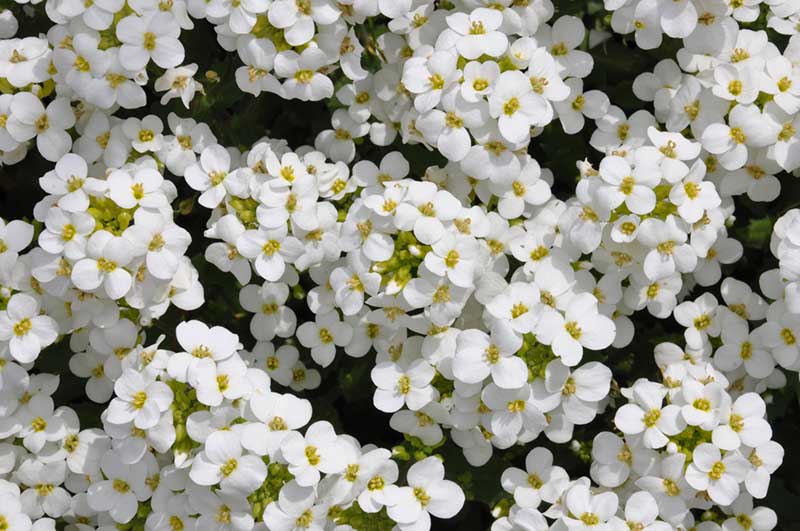
Rock cress (Aubrieta deltoidea), also called rainbow rockcress, false rockcress, and lilacbush, is a low-growing groundcover native to the Mediterranean and western Asia.
Its penchant for full sun and rocky soil makes it an excellent addition to rock gardens and gardens in areas with drier, rockier soil. This is a perennial that adds amazing color to the garden in late spring and early summer, and it’s so easy to care for that if you want to fill in spots in your garden without too much work, this is the groundcover for you.
The Basics of Growing Rock Cress
Rock cress grows well in USDA plant hardiness zones 4-9; some sources restrict this to 4-8 or 5-7, but check with nurseries for cultivars in those colder and warmer zones. It grows to only 6 to 12 inches high but can spread out as much as 2 feet, so if you want to grow this in a container, ensure you give it enough room.
Many varieties reach only 4 to 6 inches in height, too, so this is suitable for borders and other areas where you don’t want to obscure your view of adjacent plants. The flowers have four petals and come in shades of pink, red, dark blue, and purple, which tends to be among the more popular shades; blossoms appear all over the plant, forming a colorful mat. It really prefers full sun. A little partial shade is OK, but try not to place the plant in an area that never really gets any full sun at all during the day.
Soil and Water Requirements
You can use seeds or seedlings to start the plant in sandy, loamy, or rocky soils. Rock cress can grow in areas that are more rock than soil, too, so if you have a particularly rocky section of your yard, try some seeds there and see how well they do. Soils must be well-drained as the plant typically needs low water and drier conditions. If you have acidic soil, even in those very rocky areas, you’ll need to amend it to make it more neutral as the plant doesn’t like acidity.
Rock cress is a good plant for drought-prone areas. It will tolerate dry soil and doesn’t need a lot of water; give it water when the soil is dry. If you’re watering younger plants or seedlings in containers, try to water from the bottom (placing the container in some water and letting the soil soak it up) instead.

Pollinators and Wildlife
This is a nice plant for attracting birds and butterflies, as well as bees, which are the main pollinator for the plant. Rock cress has male and female flowers on the same plant. It is not attractive to deer at all.
Fertilizing
You can fertilize the plant if you want. It’s generally not necessary, but you can give it some all-purpose fertilizer in spring as the plant grows.
Deadheading and Pruning
Rock cress is easy to grow, but deadheading and pruning are essential tasks. While the plant isn’t invasive, all those flowers you see are going to turn into seed pods if you don’t deadhead the old blooms. If you don’t want seeds spreading everywhere – and remember, this is a plant whose seeds don’t really need to be placed deep in soil to germinate and grow – deadhead old flowers as soon as possible.
You shouldn’t actually prune this plant in fall after it’s done blooming. Instead, cut the plant back as you deadhead; you may get more blossoms during summer. Once you’ve cut the plant back while deadheading, leave it alone in terms of pruning until spring. At that point, you can remove foliage and stems that have suffered damage during the winter.




